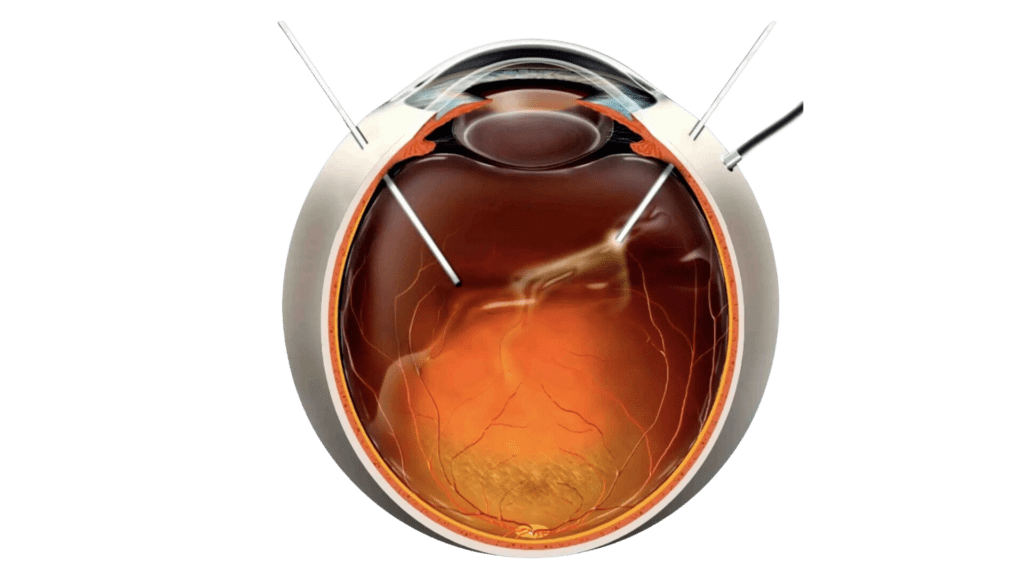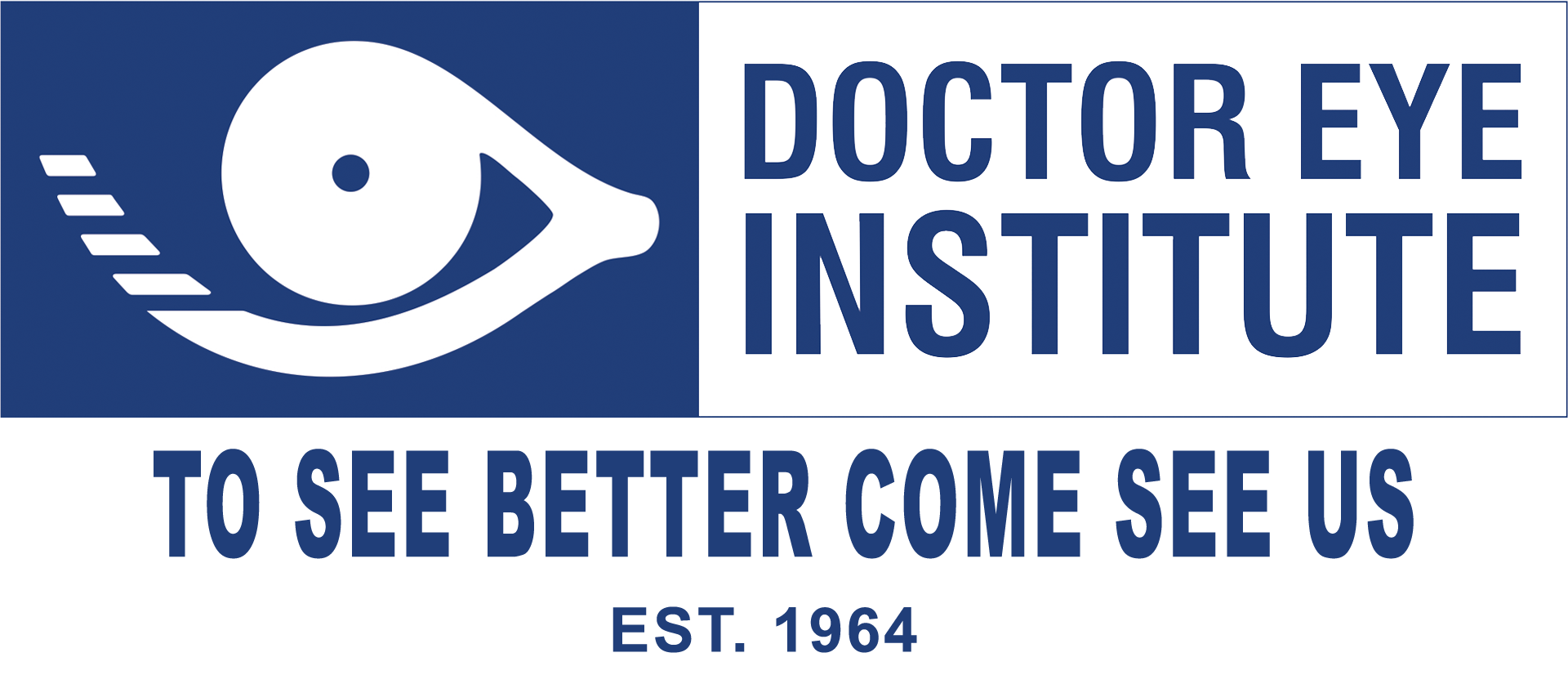Welcome To Doctor Eye Institute Pvt. Ltd.
Doctor Eye Institute, established in 1964, is a state of art eye care center with all the latest and most modern ophthalmic equipment and facilities. For the last 60+ years in service, Doctor Eye Institute Pvt. Ltd. has been the pioneer in providing many world-class treatments for Total Eye Care in Mumbai, India. For decades we have provided the best equipment and facilities keeping updated with changing times and technology – a pursuit for excellence has been our tradition.
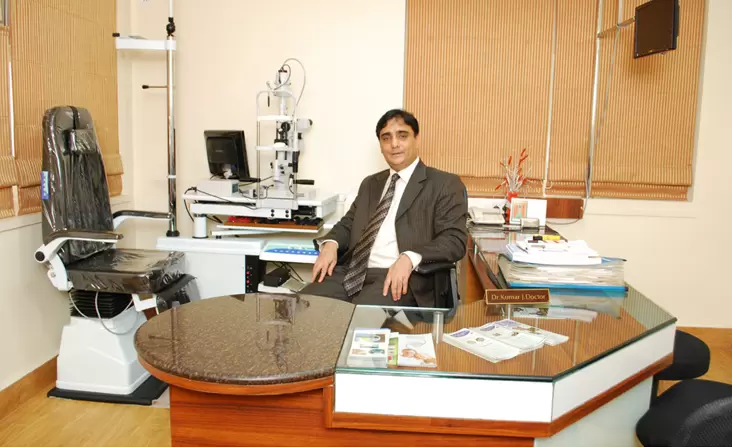
An ISO 9001 – 2008 Certified and NABH Certified hospital with the following facilities.
- Robotic Laser Bladeless Cataract surgery by Phaco emulsification using Femto Laser Z8 and White star Signature machine. (This machine is first in Maharashtra and third in whole of India.)
- LASIK surgery for correction of refractive error or removal of glasses using ESIRIS SHWIND EXCIMER LASER WITH ONLINE PACHY.
- Glaucoma diagnostic and surgery equipment’s.
- Equipment’s for evaluation and treatment of Retinal Disorders like FFA, B scan, Green laser, Vitrectomy etc.
- Facility for performing specialized surgeries like Squint, Keratoplasty or Corneal Grafting, Oculoplastic Surgeries etc.
Facilities available at Doctor Eye Institute
- Complete Eye Checkup and Screening.
- Advanced Femto Laser Robotic Bladeless Cataract Surgery and Phaco emulsification setup with IOL implantation (foldable Monofocal/Multifocal and TORIC lenses)
- Specular Microscopy
- Glaucoma Screening and Surgeries . (Perimetry, Gonioscopy, Non Contact Tonometer, Trebeculoctomy and Express Shunts implants)
- Refractive Surgeries, LASIK (AMARIS 500 Hz Excimer Laser )
- BLADELESS LASIK with FEMTO LASER Z8
- CLE/ PHAKIC Refractive Lenses (PRL) implantation where Lasik is not possible
- Retinal Surgery Setup. (F.F.A. with Digital Imaging , B Scan, Colour Photographs, OCT)
- Yag Laser for after Cataract and Glaucoma Surgeries
- Cornea Grafting, C3R (keratoconus Treatment)
- Oculoplasty. (Plastic Surgery around the eye)
- Squint Operations
- Spectacles & Contact Lens Clinic
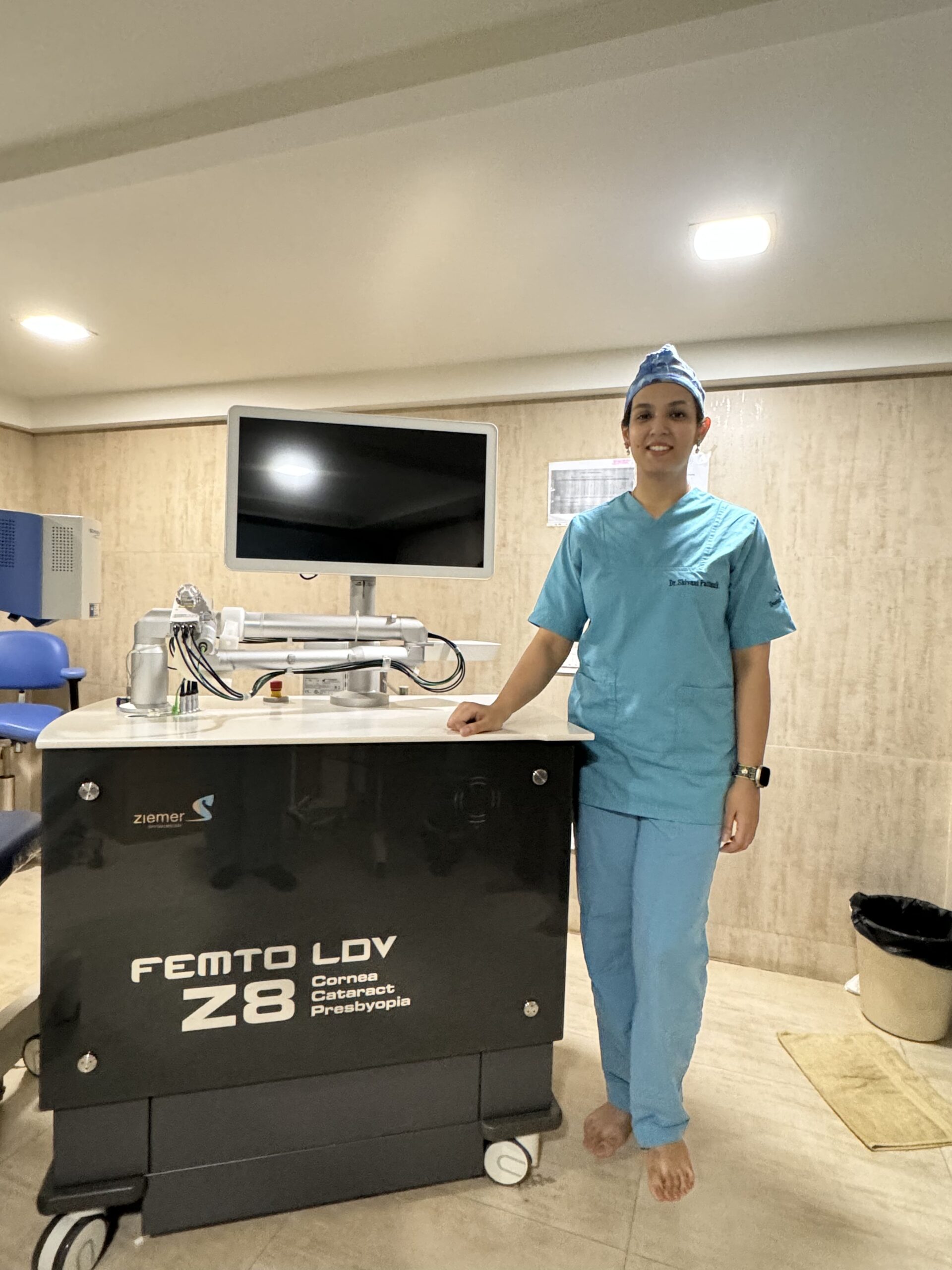
Non Contact Tonometer
- Purpose: Measures intraocular pressure (IOP) without touching the eye.
- How It Works: Uses a puff of air to flatten the cornea and measure the resistance, correlating with eye pressure.
- Benefits: Quick, painless, and essential for glaucoma screening. It avoids discomfort and potential risk of infection associated with contact tonometry.
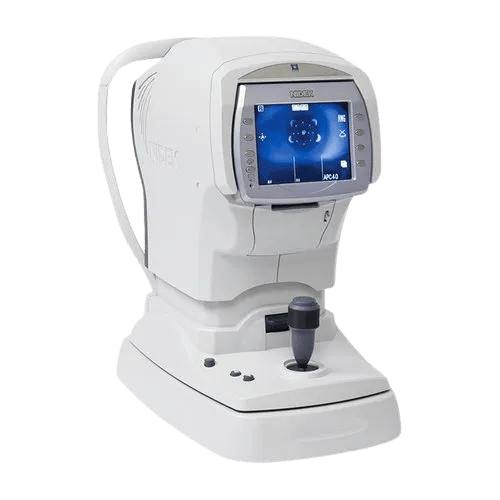
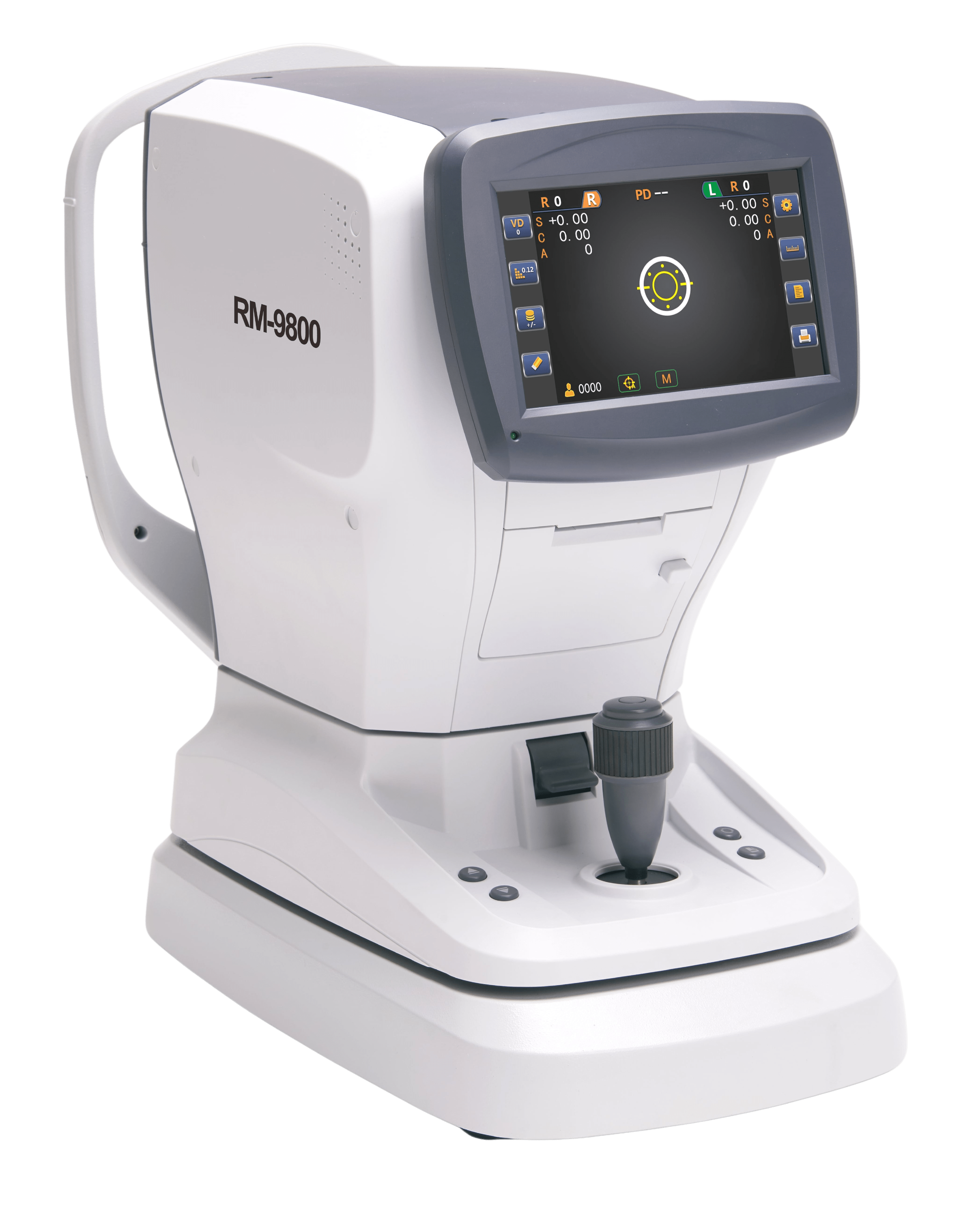
Auto Refractometer
- Purpose: Determines the refractive error of the eyes.
- How It Works: Automatically measures how light is refracted through the eye, providing precise measurements of nearsightedness, farsightedness, and astigmatism.
- Benefits: Provides accurate and quick measurements for prescribing glasses or contact lenses, enhancing the efficiency of eye exams.
Slit Lamp
- Purpose: Examines the anterior segment of the eye, including the cornea, iris, and lens.
- How It Works: Uses a high-intensity light source and a microscope to illuminate and magnify the eye's structures.
- Benefits: Allows for detailed examination of the eye’s anatomy, aiding in diagnosing various conditions such as cataracts, macular degeneration, and corneal ulcers.
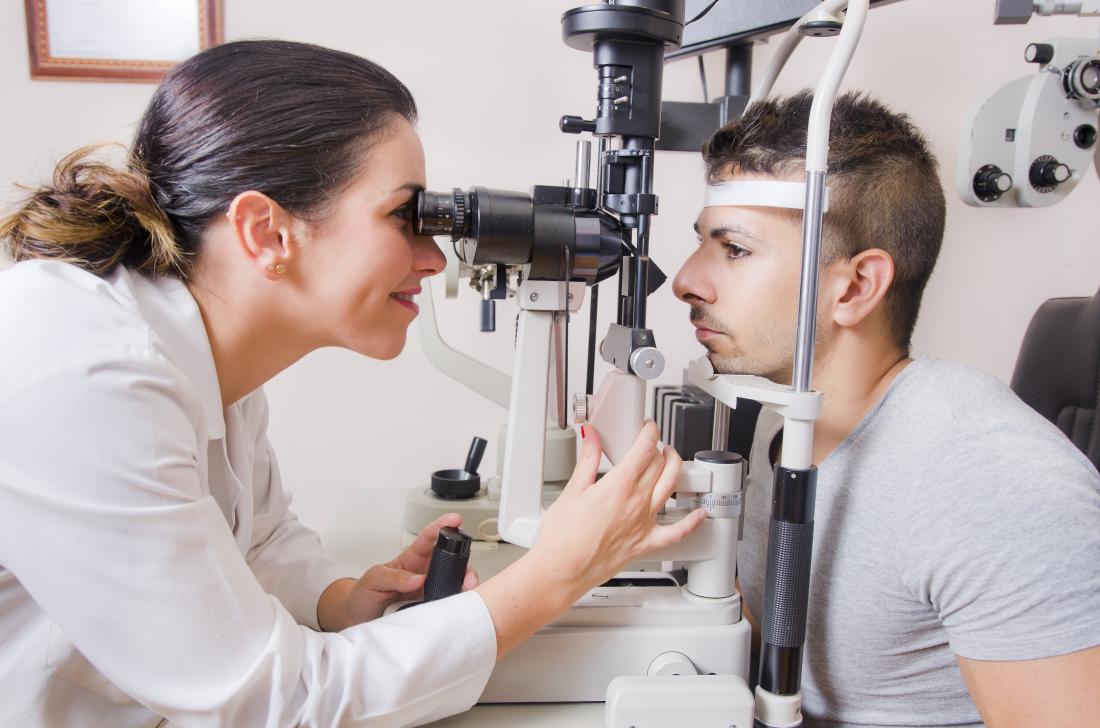
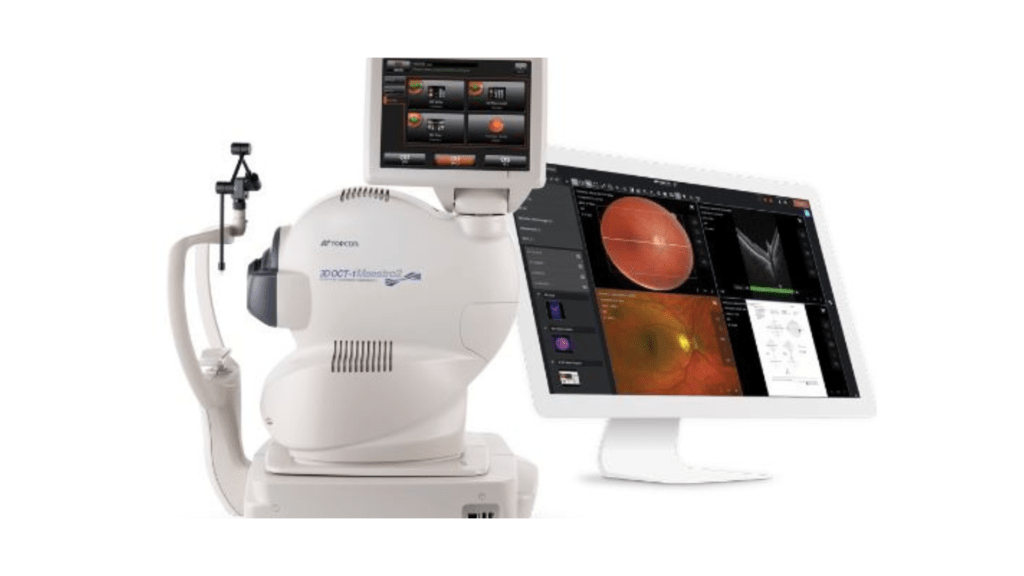
Optical Coherence Tomography (OCT)
- Purpose: Provides detailed cross-sectional images of the retina and optic nerve.
- How It Works: Uses light waves to capture detailed images of the retina’s layers, helping detect and monitor diseases like glaucoma, diabetic retinopathy, and macular degeneration.
- Benefits: Non-invasive and painless, offering high-resolution images essential for early diagnosis and effective treatment planning.
Fundus Camera (EDION Wide-Field Retinal Imaging)
- Purpose: Captures detailed images of the retina.
- How It Works: The EDION Fundus Camera can capture retinal images up to 220 degrees without the need for pupil dilation.
- Benefits: Provides comprehensive retinal assessments, covering a vast area of the retina in a single image, crucial for detecting peripheral retinal diseases.
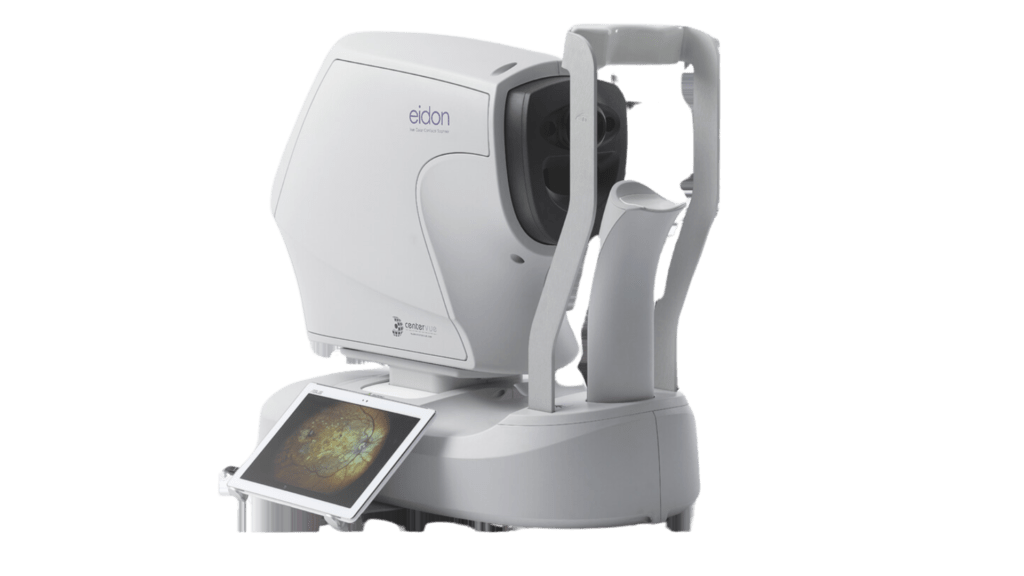
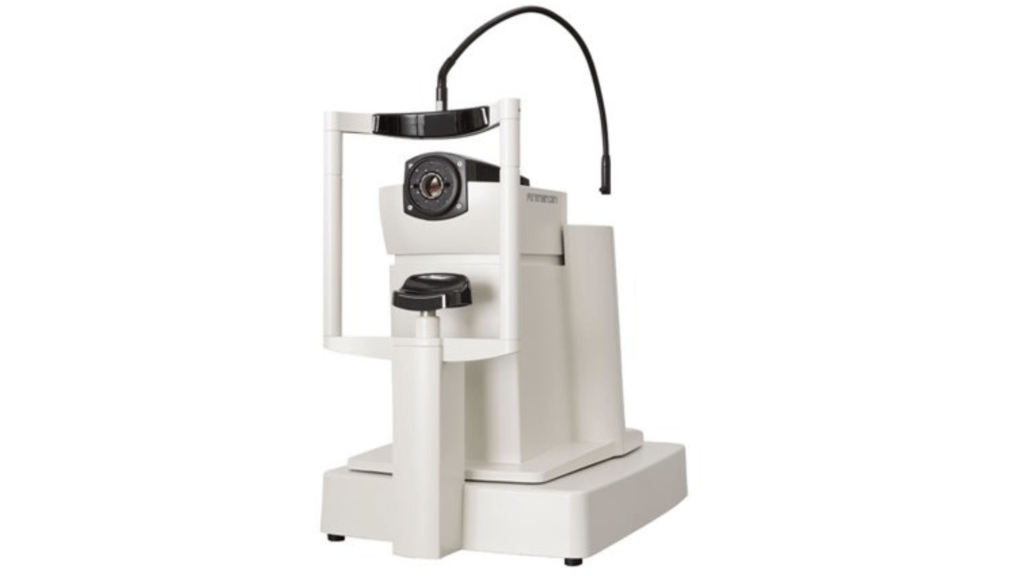
ANTERION
- Purpose: Multifunctional imaging for anterior segment analysis.
- How It Works: Uses high-resolution swept-source OCT technology to provide detailed imaging and biometry of the anterior segment, including the cornea, anterior chamber, and lens.
- Benefits: Offers a comprehensive analysis of the anterior segment for diagnosing and managing conditions such as keratoconus, cataracts, and glaucoma. Enhances surgical planning and postoperative assessment with detailed and accurate measurements.
Pentacam Topographer
- Purpose: Provides comprehensive corneal topography and tomography.
- How It Works: Uses a rotating camera to capture multiple images of the cornea, creating a detailed 3D map of its shape and thickness
- Benefits: Essential for diagnosing keratoconus, planning refractive surgery, and assessing corneal health.
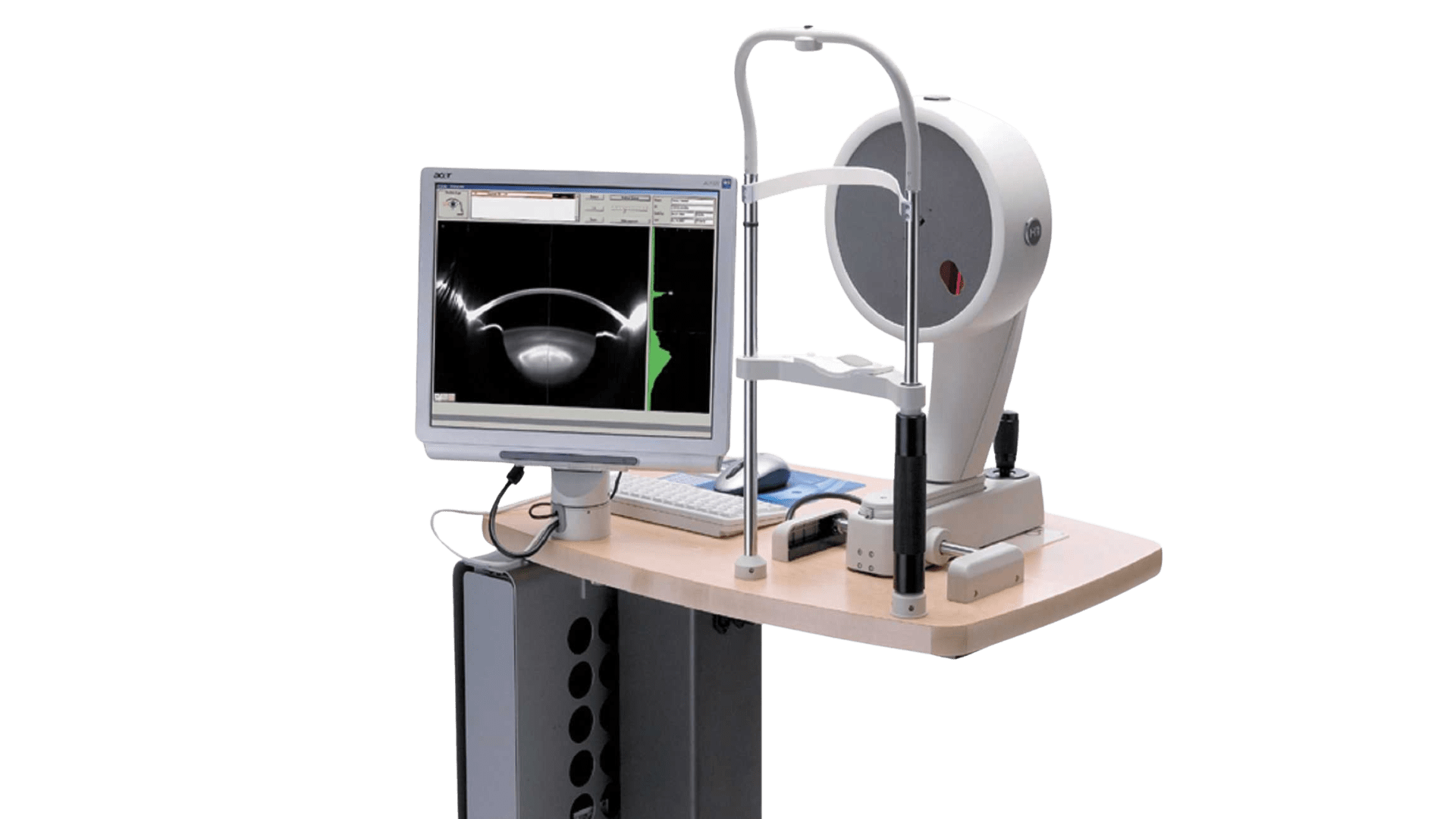
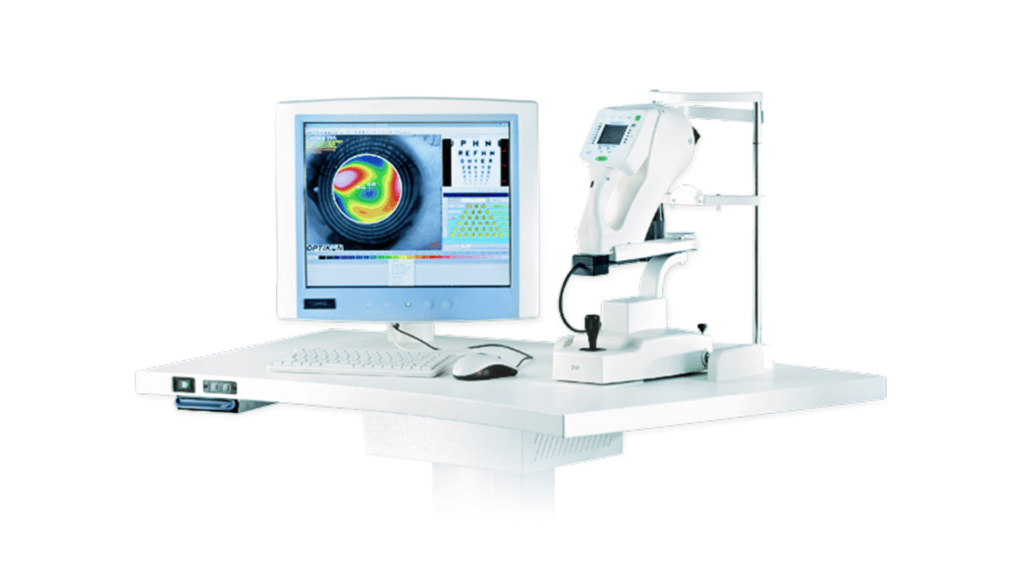
Corneal and Ocular Wavefront Machines
- Purpose: Measures aberrations in the eye to improve visual outcomes.
- How It Works: Analyzes how light waves travel through the eye, identifying irregularities that affect vision.
- Benefits: Helps in customizing treatments for refractive surgery, leading to better visual outcomes and reduced higher-order aberrations.
Specular Microscope
- Purpose: Examines the endothelium, the innermost layer of the cornea.
- How It Works: Captures detailed images of the corneal endothelial cells.
- Benefits: Assesses endothelial cell health, crucial for diagnosing corneal diseases and planning surgeries like corneal transplants.
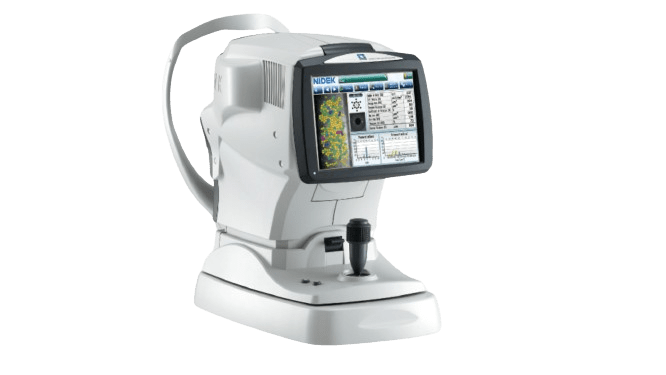
Treatment Equipments
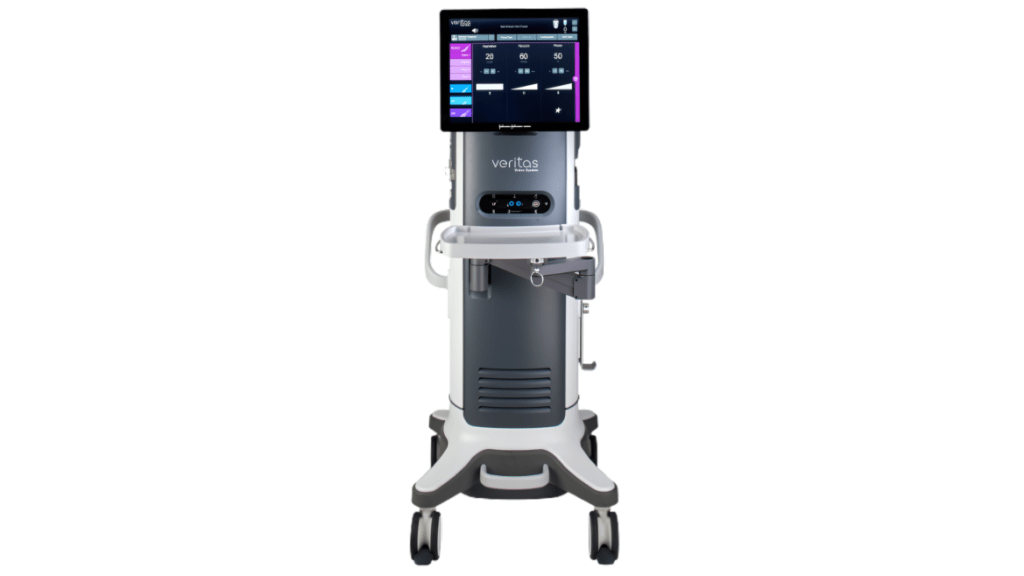
Veritas Phaco Machine
- Purpose: Used for cataract surgery.
- How It Works: Utilizes ultrasound technology to emulsify the cloudy lens, which is then removed and replaced with an artificial intraocular lens.
- Benefits: Advanced fluidics and real-time occlusion sensing enhance safety, efficacy, and accuracy. Reduced heat generation minimizes thermal injury, leading to quicker recovery and better visual outcomes.
Laser Systems for Refractive Surgery (LASIK and CLEAR)
- Purpose: Corrects refractive errors like myopia, hyperopia, and astigmatism.
- How It Works: LASIK uses a laser to create a corneal flap and reshape the underlying corneal tissue. CLEAR involves creating a small lenticule within the cornea, which is then removed through a tiny incision.
- Benefits: Both methods are highly precise, minimally invasive, and offer quick recovery times with excellent visual outcomes.
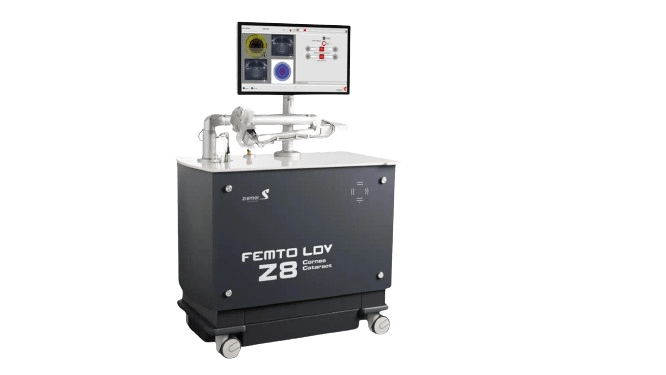
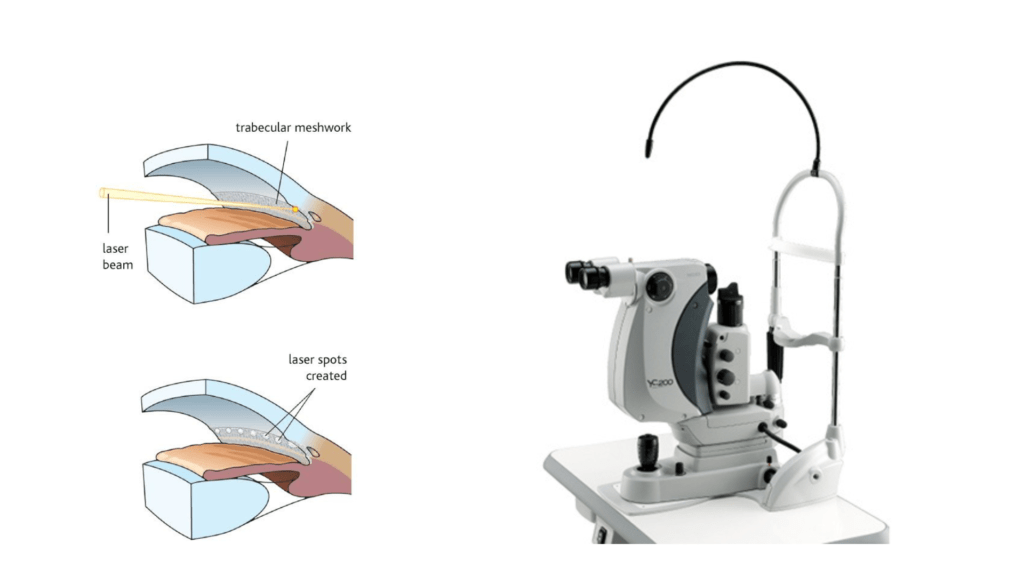
Selective Laser Trabeculoplasty (SLT)
- Purpose: Treats glaucoma by reducing intraocular pressure.
- How It Works: A laser selectively targets the trabecular meshwork, enhancing fluid outflow from the eye.
- Benefits: Non-invasive, repeatable, and effective in lowering eye pressure with minimal discomfort.
YAG Laser Capsulotomy
- Purpose: Treats posterior capsular opacification (a common post-cataract surgery complication).
- How It Works: Uses a YAG laser to create an opening in the cloudy capsule that surrounds the intraocular lens.
- Benefits: Quick, painless, and restores clear vision effectively.
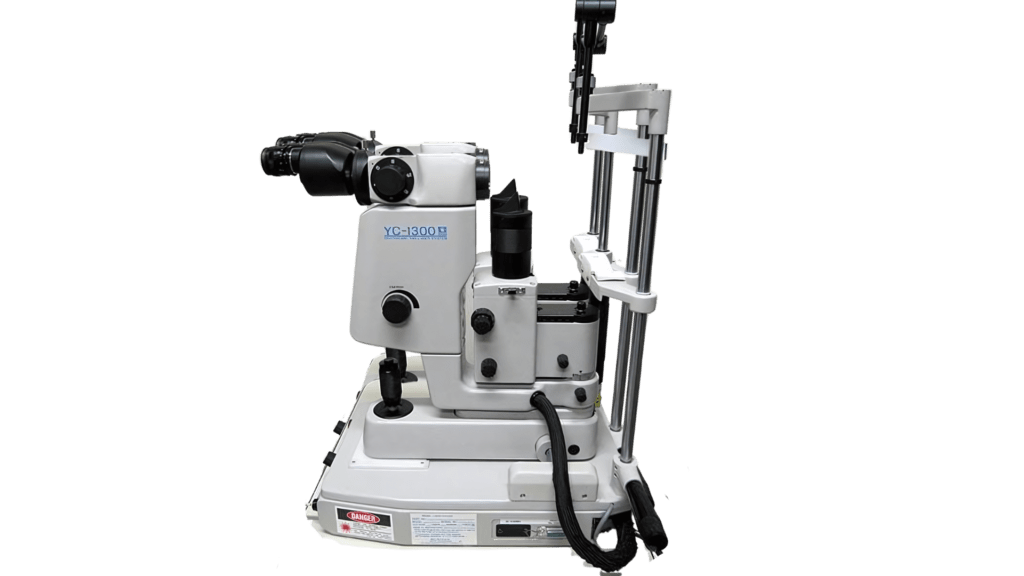
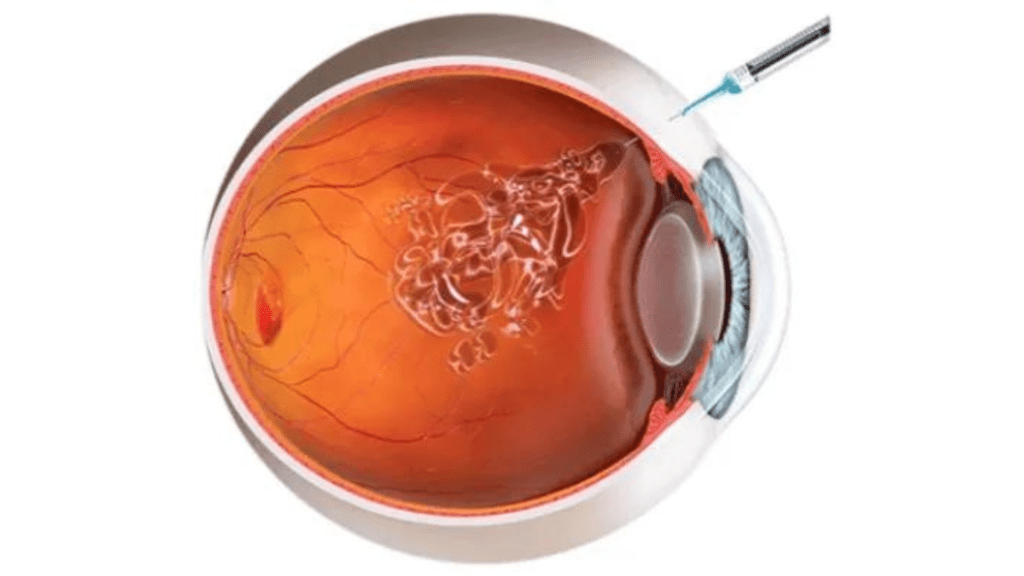
Intravitreal Injection Systems
- Purpose: Delivers medication directly into the vitreous cavity of the eye.
- How It Works: Injections are used to administer anti-VEGF drugs or steroids for conditions like diabetic retinopathy and macular degeneration.
- Benefits: Provides targeted treatment with high efficacy in reducing retinal swelling and inhibiting abnormal blood vessel growth.
Vitrectomy Machine
- Purpose: Used for vitreoretinal surgery to treat conditions such as retinal detachment, macular holes, and diabetic retinopathy.
- How It Works: Removes the vitreous gel and replaces it with a saline solution or gas bubble to allow the retina to heal.
- Benefits: Restores lost vision, prevents further retinal damage, and treats various vitreoretinal disorders effectively.
